Use of Evolutionary Algorithm for Identifying Quantitative Impact of PM2.5 and PM10 on PV Power Generation
Abstract
1. Introduction
Related Literature and Studies
2. Materials and Methods
2.1. Concept of Measurements
2.2. Instrumentation and Experimental Facility
2.3. Data Processing
2.4. Simulation of Power Generated in Photovoltaic Installation Depending on Percentage of Pollutants and Cloudiness
3. Results and Discussion
3.1. Visualization of Current, Voltage, and Power Curves of PV Panels
- G(h)—global irradiance on horizontal plane, W/m2;
- Gb(n)—direct irradiance on plane, W/m2;
- Gd(h)—diffuse irradiance on horizontal plane, W/m2;
- IR(h)—surface thermal irradiance on horizontal plane, W/m2.
3.2. Statistical Analysis
- number of generations—200;
- population size—100;
- number of crossovers per generation—5;
- number of mutations per generation—5.
- w%,1 by weight factor of influence of PM2.5 particulate matter on energy that was produced by PV panel;
- w%,2 by weight coefficient of influence of PM10 particulate matter on energy that was produced by PV panel;
- w%,3 by weight factor of cloudiness on energy that was produced by photovoltaic panel.
4. Conclusions
Author Contributions
Funding
Data Availability Statement
Acknowledgments
Conflicts of Interest
References
- Breeze, P. Chapter 13—Solar Power. In Power Generation Technologies, 3rd ed.; Breeze, P., Ed.; Newnes: London, UK, 2019; pp. 293–321. [Google Scholar]
- Green, M.A.; Dunlop, E.D.; Hohl-Ebinger, J.; Yoshita, M.; Kopidakis, N.; Bothe, K.; Hinken, D.; Rauer, M.; Hao, X. Solar cell efficiency tables (Version 60). Prog. Photovolt. Res. Appl. 2022, 30, 687–701. [Google Scholar] [CrossRef]
- Yoshikawa, K.; Kawasaki, H.; Yoshida, W.; Irie, T.; Konishi, K.; Nakano, K.; Uto, T.; Adachi, D.; Kanematsu, M.; Uzu, H.; et al. Silicon heterojunction solar cell with interdigitated back contacts for a photoconversion efficiency over 26%. Nat. Energy 2017, 2, 17032. [Google Scholar] [CrossRef]
- Cotfas, D.T.; Cotfas, P.A.; Mahmoudinezhad, S.; Louzazni, M. Critical factors and parameters for hybrid Photovoltaic-Thermoelectric systems; review. Appl. Therm. Eng. 2022, 215, 118977. [Google Scholar] [CrossRef]
- ©Fraunhofer ISE: Photovoltaics Report. Updated: 24 February 2022. Available online: https://www.ise.fraunhofer.de (accessed on 1 September 2022).
- m-series-440-435-430-425-420-h-ac-datasheet-539973-revd.pdf. Available online: https://us.sunpower.com/solar-resources/m-series-residential-m440-m435-m430-m425-m420 (accessed on 1 September 2022).
- LG405Q1C-A6. Available online: https://www.lg.com/us/business/neon-r/lg-lg405q1c-a6 (accessed on 1 September 2022).
- REC Alpha Pure Series Product Specification. Available online: https://usa.recgroup.com/sites/default/files/documents/ds_rec_alpha_pure_series_en.pdf?t=1641935533 (accessed on 1 September 2022).
- Geisz, J.F.; France, R.M.; Schulte, K.L.; Steiner, M.A.; Norman, A.G.; Guthrey, H.L.; Young, M.R.; Song, R.; Moriarty, T. Six-junction III–V solar cells with 47.1% conversion efficiency under 143 Suns concentration. Nat. Energy 2020, 5, 326–335. [Google Scholar] [CrossRef]
- Dimroth, F.; Tibbits, T.N.D.; Niemeyer, M.; Predan, F.; Beutel, P.; Karcher, C.; Oliva, E.; Siefer, G.; Lackner, D.; Fuß-Kailuweit, P.; et al. Four-junction wafer-bonded concentrator solar cells. IEEE J. Photovolt. 2016, 6, 343–349. [Google Scholar] [CrossRef]
- Andreani, L.C.; Bozzola, A.; Kowalczewski, P.; Liscidini, M.; Redorici, L. Silicon solar cells: Toward the efficiency limits. Adv. Phys. X 2019, 4, 125–148. [Google Scholar] [CrossRef]
- Webster, R.C. 45—Air Pollution. In Plant Engineer’s Handbook; Mobley, R.K., Ed.; Butterworth-Heinemann: Oxford, UK, 2001; pp. 813–822. [Google Scholar]
- Barichello, J.; Vesce, L.; Mariani, P.; Leonardi, E.; Braglia, R.; Di Carlo, A.; Canini, A.; Reale, A. Stable Semi-Transparent Dye-Sensitized Solar Modules and Panels for Greenhouse Application. Energies 2021, 14, 6393. [Google Scholar] [CrossRef]
- Deolalkar, S.P. Chapter 8—Solar Power. In Designing Green Cement Plants; Deolalkar, S.P., Ed.; Butterworth-Heinemann: Oxford, UK, 2016; pp. 251–258. [Google Scholar]
- Mareddy, A.R. Environmental Impact Assessment: Theory and Practice; Butterworth-Heinemann: Oxford, UK, 2017. [Google Scholar]
- Kuşkaya, S. Residential solar energy consumption and greenhouse gas nexus: Evidence from Morlet wavelet transforms. Renew. Energy 2022, 192, 793–804. [Google Scholar] [CrossRef]
- Pytel, K.; Melnyk, M.; Hudy, W.; Kurdziel, F.; Kalwar, A.; Gumula, S. Predicting the Use of Solar Photovoltaic Panels for Generating Electricity in the Area with Air Pollution. In Proceedings of the 2020 IEEE XVIth International Conference on the Perspective Technologies and Methods in MEMS Design (MEMSTECH), Lviv, Ukraine, 22–26 April 2020; pp. 107–110. [Google Scholar]
- Hudy, W.; Piaskowska-Silarska, M.; Noga, H.; Kulinowski, W.; Pytel, K. Analysis of the possibility of reducing the amount of air pollution using photovoltaic systems. In Proceedings of the 2018 IEEE 19th International Carpathian Control Conference (ICCC), Szilvasvarad, Hungary, 28–31 May 2018; pp. 565–569. [Google Scholar]
- Bergin, M.H.; Ghoroi, C.; Dixit, D.; Schauer, J.J.; Shindell, D.T. Large Reductions in Solar Energy Production Due to Dust and Particulate Air Pollution. Environ. Sci. Technol. Lett. 2017, 4, 339–344. [Google Scholar] [CrossRef]
- Matci, D.K.; Kaplan, G.; Avdan, U. Changes in air quality over different land covers associated with COVID-19 in Turkey aided by GEE. Environ. Monit. Assess. 2022, 194, 762. [Google Scholar] [CrossRef]
- Peng, W.; Zeng, Y.; Gong, H.; Leng, Y.Q.; Yan, Y.H.; Hu, W. Evolutionary algorithm and parameters extraction for dye-sensitised solar cells one-diode equivalent circuit model. Micro Nano Lett. 2013, 8, 86–89. [Google Scholar] [CrossRef]
- Kumari, P.A.; Geethanjali, P. Adaptive Genetic Algorithm Based Multi-Objective Optimization for Photovoltaic Cell Design Parameter Extraction. Energy Procedia 2017, 117, 432–441. [Google Scholar] [CrossRef]
- Zagrouba, M.; Sellami, A.; Bouaicha, M.; Ksouri, M. Identification of PV solar cells and modules parameters using the genetic algorithms: Application to maximum power extraction. Sol. Energy 2010, 84, 860–866. [Google Scholar] [CrossRef]
- Moldovan, N.; Picos, R.; Garcia-Moreno, E.N. Parameter Extraction of a Solar Cell Compact Model using Genetic Algorithms. In Proceedings of the 2009 Spanish Conference on Electron Devices, Santiago de Compostela, Spain, 11–13 February 2009; pp. 379–382. [Google Scholar]
- Zarei, T.; Abdolzadeh, M.; Soltani, M.; Aghanajafi, C. Computational investigation of dust settlement effect on power generation of three solar tracking photovoltaic modules using a modified angular losses coefficient. Sol. Energy 2021, 222, 269–289. [Google Scholar] [CrossRef]
- Gao, T. Photovoltaic Power Prediction Considering the Influence of Smog on Solar Radiation. E3S Web Conf. 2021, 299, 02007. [Google Scholar] [CrossRef]
- Mustafa, R.J.; Gomaa, M.R.; Al-Dhaifallah, M.; Rezk, H. Environmental Impacts on the Performance of Solar Photovoltaic Systems. Sustainability 2020, 12, 608. [Google Scholar] [CrossRef]
- Lin, S.; Chen, N.; Zhou, Q.; Lin, T.; Li, H. A Scheme for Quickly Simulating Extraterrestrial Solar Radiation over Complex Terrain on a Large Spatial-Temporal Span—A Case Study over the Entirety of China. Remote Sens. 2022, 14, 1753. [Google Scholar] [CrossRef]
- Liu, W.; Zhang, J.; Wei, H.; Zhang, K.; Fang, S.; Xie, L.; Ge, J. Short-term PV power prediction considering the influence of aerosol. IOP Conf. Ser. Earth Environ. Sci. 2020, 585, 012017. [Google Scholar] [CrossRef]
- Tao, J.; Zhang, M.; Chen, L.; Wang, Z.; Su, L.; Ge, C.; Han, X.; Zou, M. A method to estimate concentrations of surface-level particulate matter using satellite-based aerosol optical thickness. Sci. China Earth Sci. 2013, 56, 1422–1433. [Google Scholar] [CrossRef]
- Salari, A.; Hakkaki-Fard, A. A numerical study of dust deposition effects on photovoltaic modules and photovoltaic-thermal systems. Renew. Energy 2019, 135, 437–449. [Google Scholar] [CrossRef]
- Said, S.A.M.; Walwil, H.M. Fundamental studies on dust fouling effects on PV module performance. Sol. Energy 2014, 107, 328–337. [Google Scholar] [CrossRef]
- Alnasser, T.M.A.; Mahdy, A.M.J.; Abass, K.I.; Chaichan, M.T.; Kazem, H.A. Impact of dust ingredient on photovoltaic performance: An experimental study. Sol. Energy 2020, 195, 651–659. [Google Scholar] [CrossRef]
- Saidan, M.; Albaali, A.G.; Alasis, E.; Kaldellis, J.K. Experimental study on the effect of dust deposition on solar photovoltaic panels in desert environment. Renew. Energy 2016, 92, 499–505. [Google Scholar] [CrossRef]
- Pulipaka, S.; Kumar, R. Analysis of soil distortion factor for photovoltaic modules using particle size composition. Sol. Energy 2018, 161, 90–99. [Google Scholar] [CrossRef]
- Fountoukis, S.; Figgis, B.; Ackermann, L.; Ayoub, M.A. Effects of atmospheric dust deposition on solar PV energy production in a desert environment. Sol. Energy 2018, 164, 94–100. [Google Scholar] [CrossRef]
- Liagkouras, K. A new three-dimensional encoding multiobjective evolutionary algorithm with application to the portfolio optimization problem. Knowl.-Based Syst. 2019, 163, 186–203. [Google Scholar] [CrossRef]
- Fogel, D.B. Evolutionary Computation: Toward a New Philosophy of Machine Intelligence, 2nd ed.; IEEE Press: Piscataway, NJ, USA, 2000. [Google Scholar]
- Hudy, W.; Pytel, K.; Lobur, M.; Piaskowska-Silarska, M.; Gumula, S.; Melnyk, M. Application of evolutionary algorithms to the analysis of the possibilities of solar energy use. In Proceedings of the 2019 IEEE 20th International Carpathian Control Conference (ICCC), Krakow-Wieliczka, Poland, 26–29 May 2019; pp. 1–6. [Google Scholar]
- Kazem, H.A.; Chaichan, M.T.; Al-Waeli, A.H.A.; Sopian, K. A novel model and experimental validation of dust impact on grid-connected photovoltaic system performance in Northern Oman. Sol. Energy 2020, 206, 564–578. [Google Scholar] [CrossRef]
- Pytel, K.; Hudy, W.; Kurdziel, F.; Kalwar, A.; Gumula, S.; Soliman, M.H. Application of Correlation Analysis for Impact Assessment of Air Quality on the Possibility of Using Chosen Source of Renewable Energy. In Proceedings of the 2020 IEEE XVIth International Conference on the Perspective Technologies and Methods in MEMS Design (MEMSTECH), Lviv, Ukraine, 22–26 April 2020; pp. 17–21. [Google Scholar]
- Alonso-Montesinos, J.; Martínez, F.R.; Polo, J.; Martín-Chivelet, N.; Batlles, F.J. Economic Effect of Dust Particles on Photovoltaic Plant Production. Energies 2020, 13, 6376. [Google Scholar] [CrossRef]
- Mitchell, M.; Taylor, C.E. Evolutionary computation: An overview. Annu. Rev. Ecol. Syst. 1999, 30, 593–616. [Google Scholar] [CrossRef]
- Kuk-Hyun, H.; Jong-Hwan, K. On setting the parameters of quantum-inspired evolutionary algorithm for practical application. In Proceedings of the The 2003 Congress on Evolutionary Computation (CEC’03), Canberra, Australia, 8–12 December 2003; pp. 178–194. [Google Scholar]
- Bhardwaj, R.; Pruthi, D. Evolutionary Techniques for Optimizing Air Quality Model. Procedia Comput. Sci. 2020, 167, 1872–1879. [Google Scholar] [CrossRef]
- Srinivasan, D.; Tettamanzi, A. An Evolutionary Algorithm for Evaluation of Emission Compliance Options in View of the Clean Air Act Amendments. IEEE Trans. Power Syst. 1997, 12, 336–341. [Google Scholar] [CrossRef]
- Saha, C.; Agbu, N.; Jinks, R.; Huda, M.N. Review article of the solar PV parameters estimation using evolutionary algorithms. MOJ Sol. Photoen Syst. 2018, 2, 66–78. [Google Scholar]
- Slowik, A.; Kwasnicka, H. Evolutionary algorithms and their applications to engineering problems. Neural Comput. Appl. 2020, 32, 12363–12379. [Google Scholar] [CrossRef]
- Alhammadi, H.Y.; Romagnoli, J.A. Chapter B4—Process design and operation. In Incorporating Environmental, Profitability, Heat Integration and Controllability Considerations; Seferlis, P., Georgiadis, M.C., Eds.; Computer Aided Chemical Engineering; Elsevier: Amsterdam, The Netherlands, 2004; Volume 17, pp. 264–305. [Google Scholar]
- Jedlicka, P.; Bird, A.D.; Cuntz, H. Pareto optimality, economy-effectiveness trade-offs and ion channel degeneracy: Improving population modelling for single neurons. Open Biol. 2022, 12, 220073. [Google Scholar] [CrossRef] [PubMed]
- Sarver, T.; Al-Qaraghuli, A.; Kazmerski, L.L. A comprehensive review of the impact of dust on the use of solar energy: History, investigations, results, literature, and mitigation approaches. Renew. Sustain. Energy Rev. 2013, 22, 698–733. [Google Scholar] [CrossRef]
- Polo, J.; Martín-Chivelet, N.; Sanz-Saiz, C.; Alonso-Montesinos, J.; López, G.; Alonso-Abella, M.; Battles, F.J.; Marzo, A.; Hanrieder, N. Modeling soiling losses for rooftop PV systems in suburban areas with nearby forest in Madrid. Renew. Energy 2021, 178, 420–428. [Google Scholar] [CrossRef]
- Sulaiman, S.A.; Singh, A.K.; Mokhtar, M.M.; Bou-Rabee, M.A. Influence of dirt accumulation on performance of PV panels. Energy Procedia 2014, 50, 50–56. [Google Scholar] [CrossRef]
- Pérez, N.S.; Alonso-Montesinos, J.; Batlles, F. Estimation of Soiling Losses from an Experimental Photovoltaic Plant Using Artificial Intelligence Techniques. Appl. Sci. 2021, 11, 1516. [Google Scholar] [CrossRef]

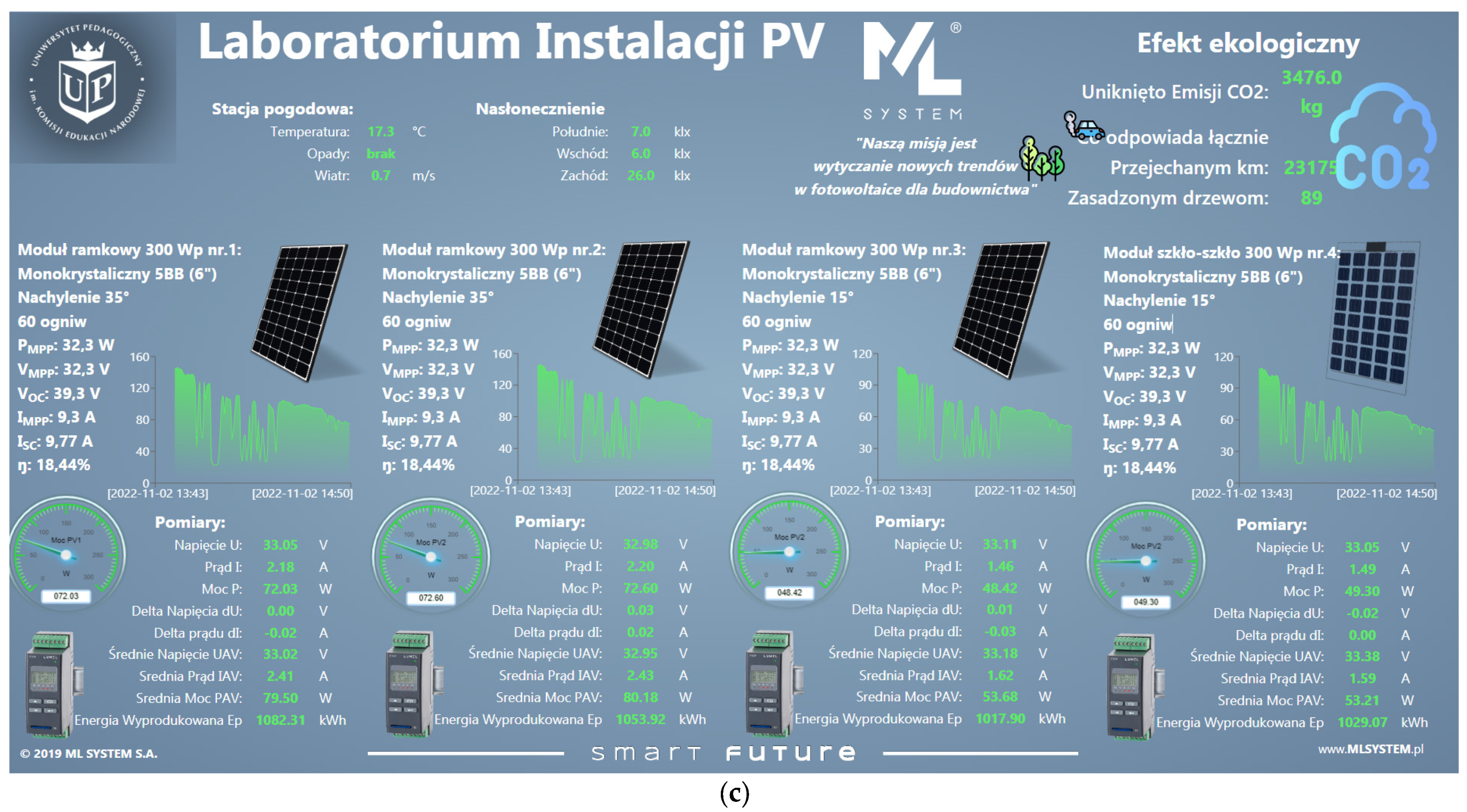
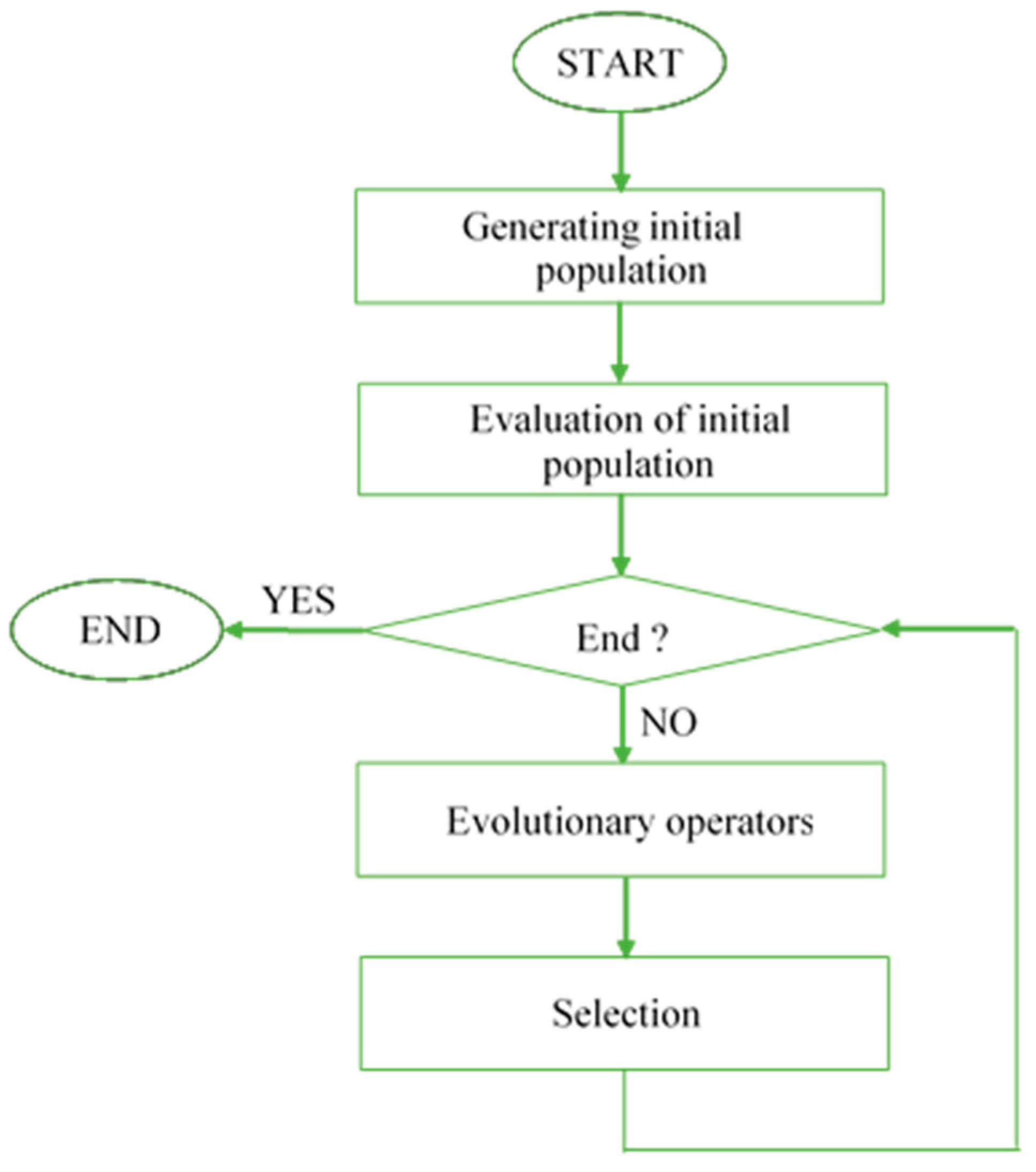
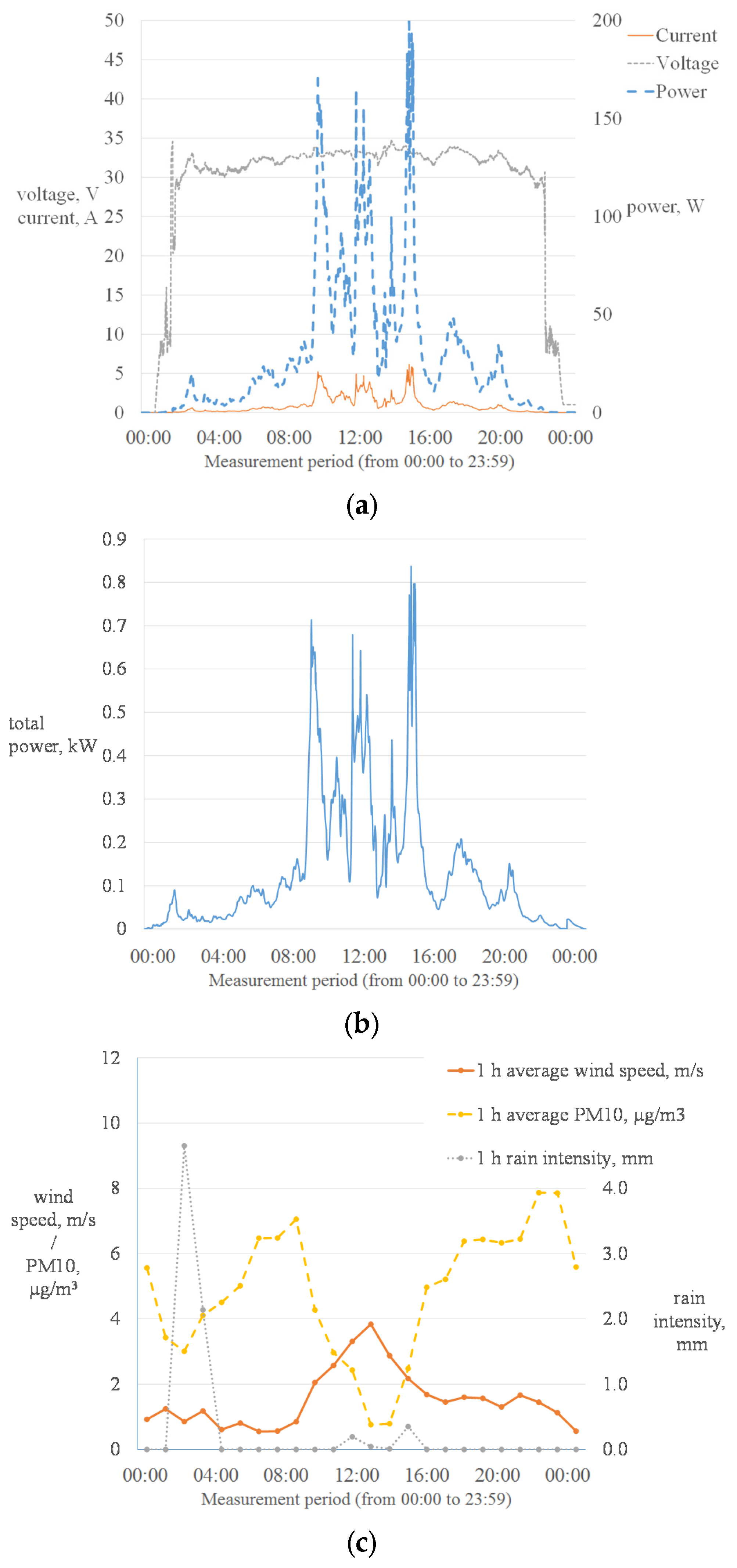
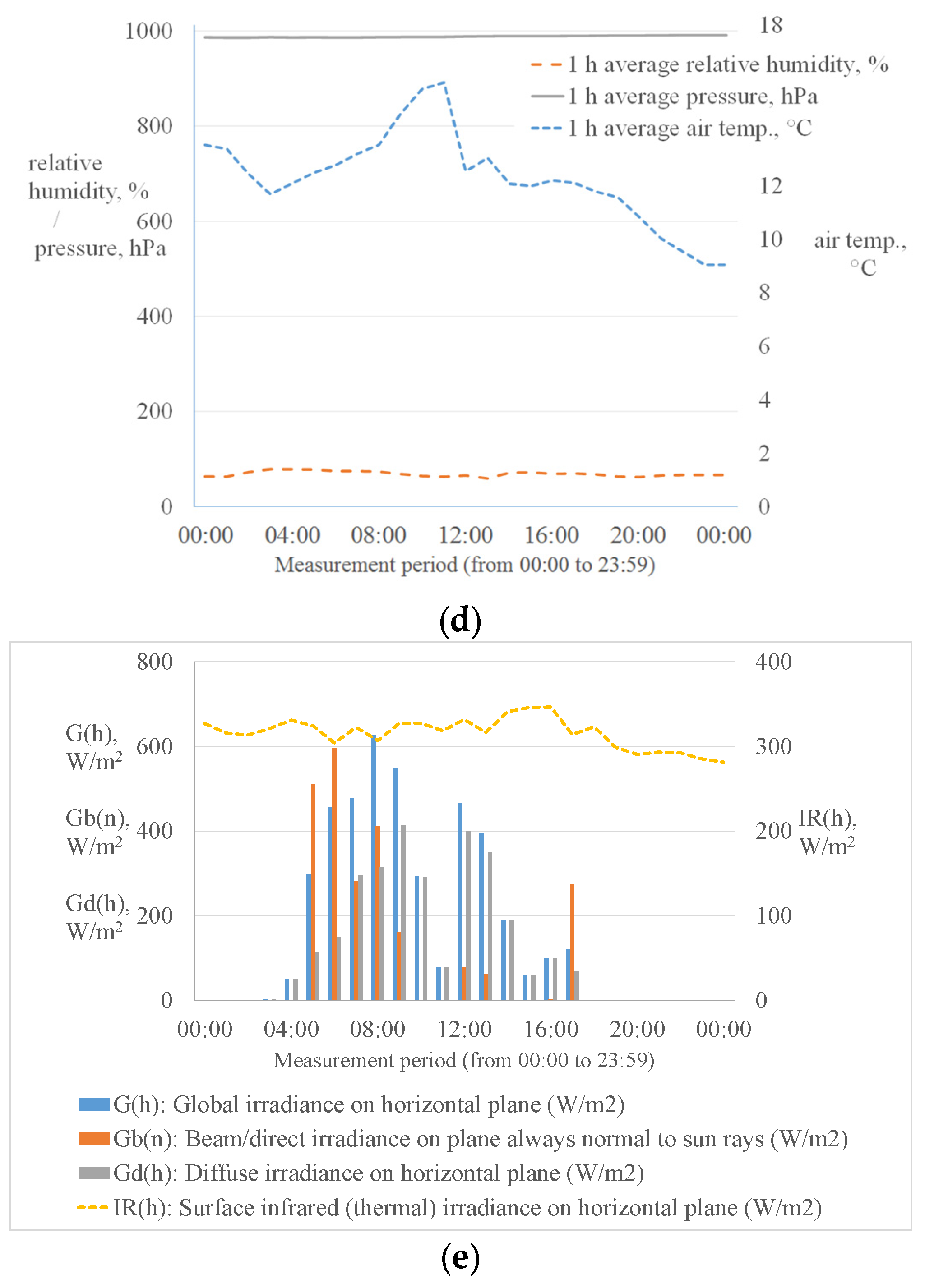
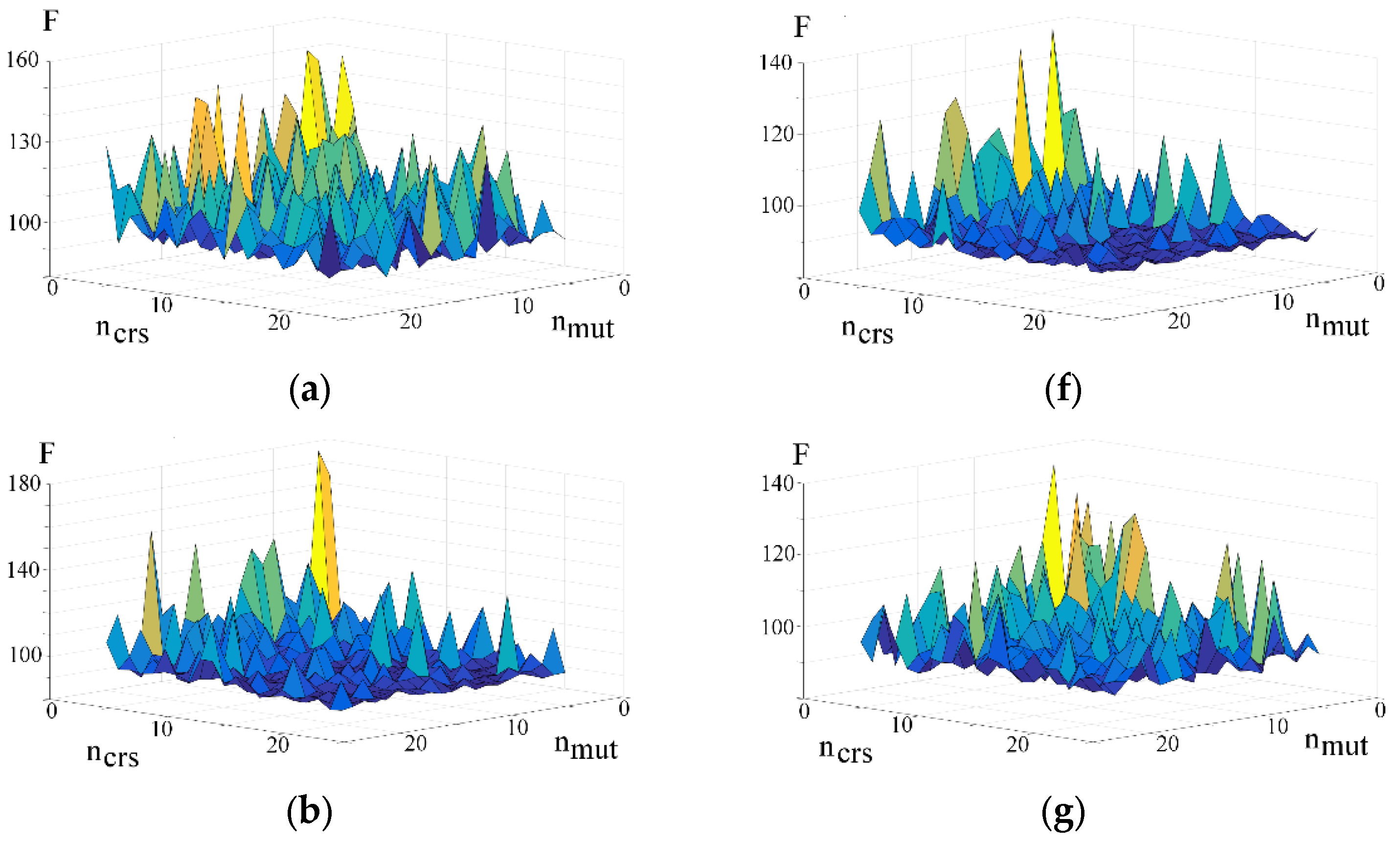
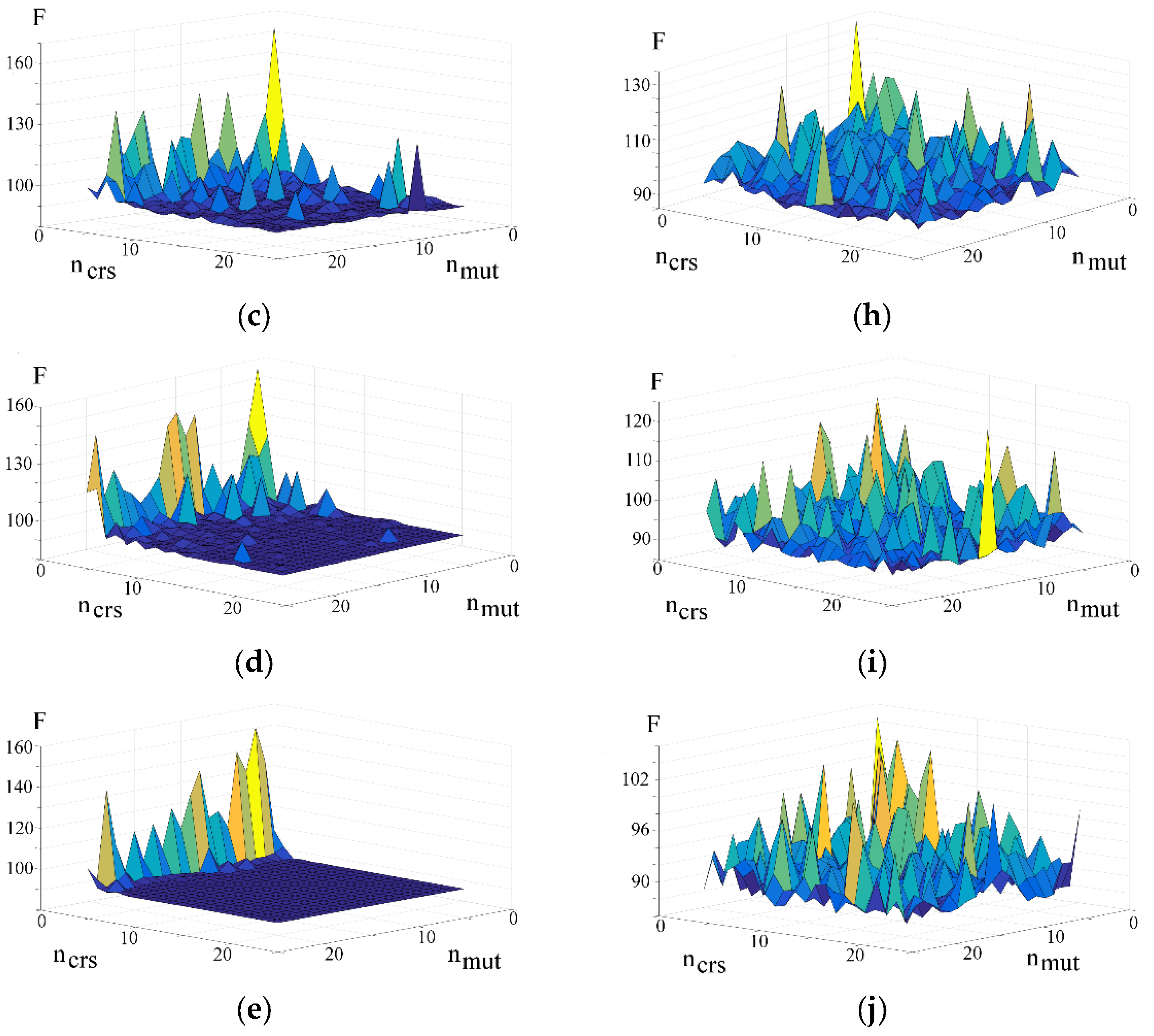
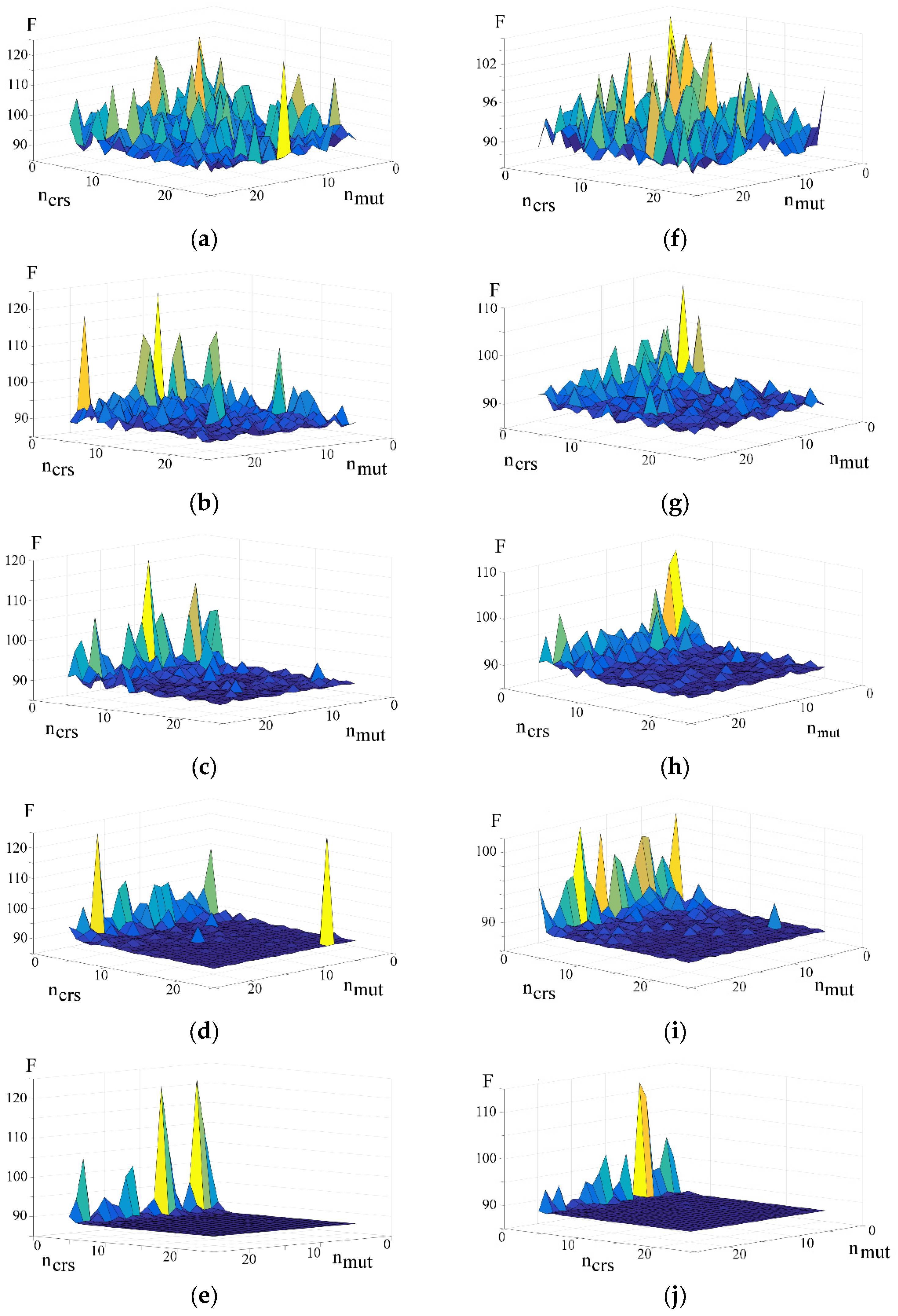

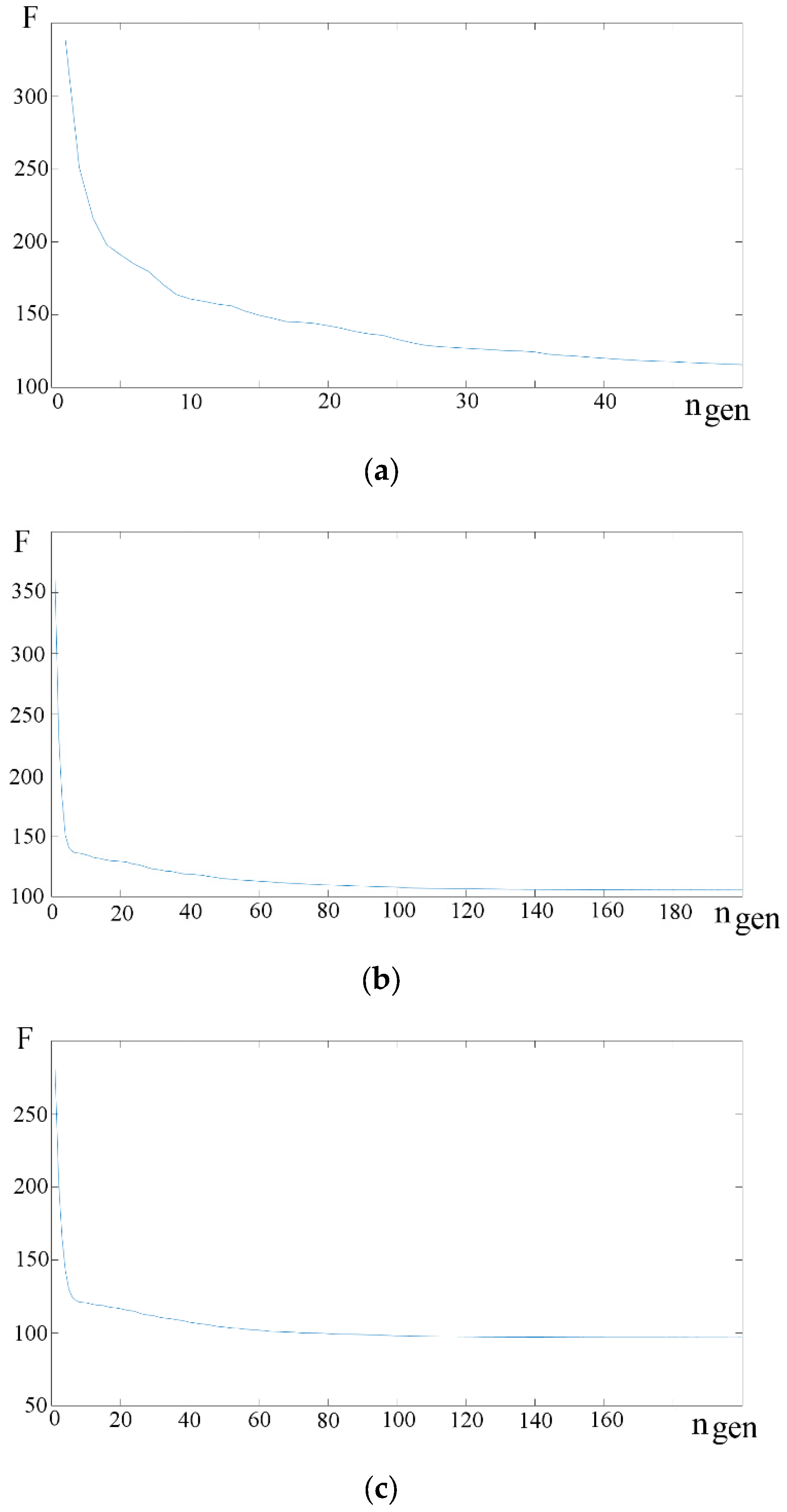
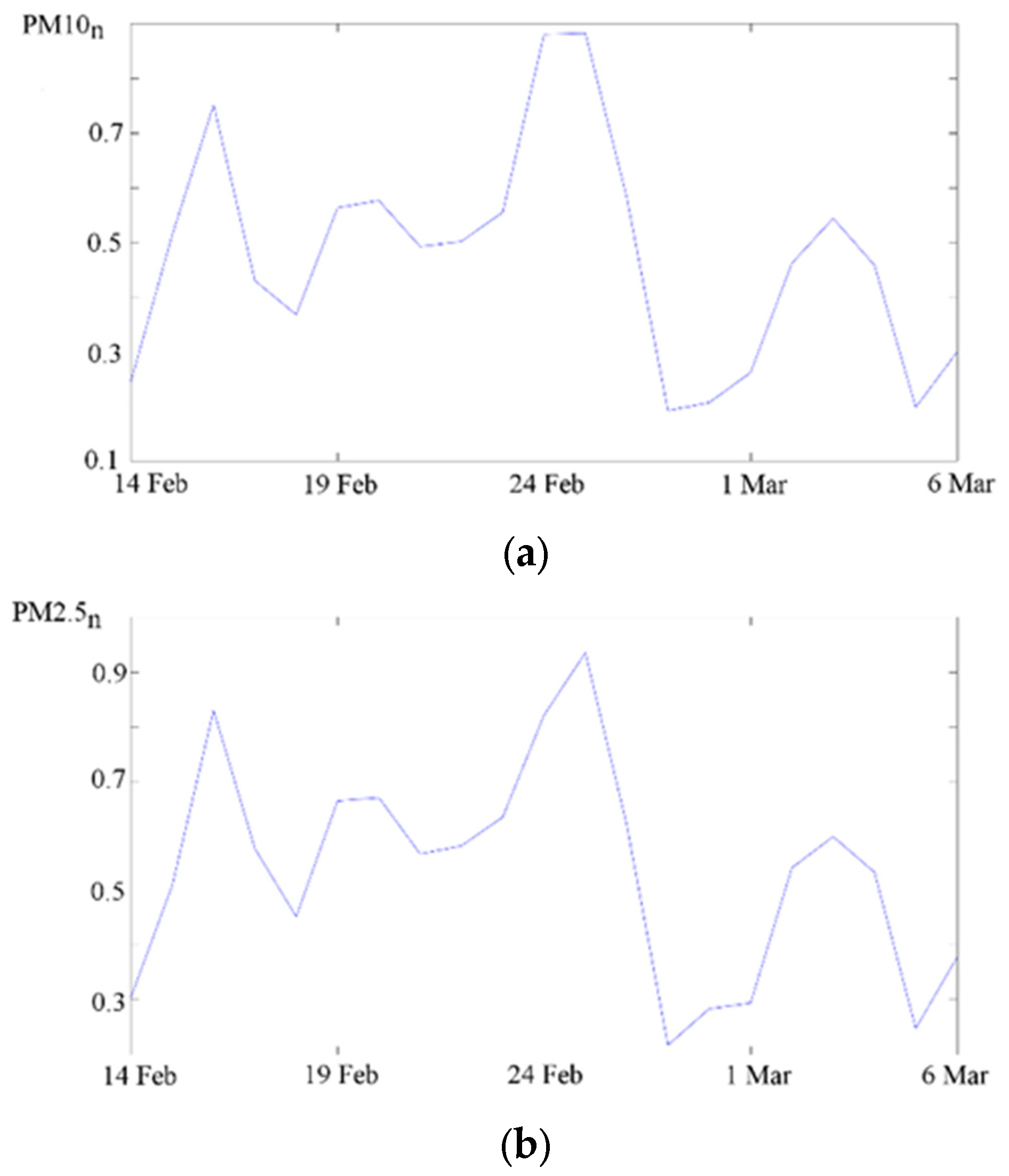
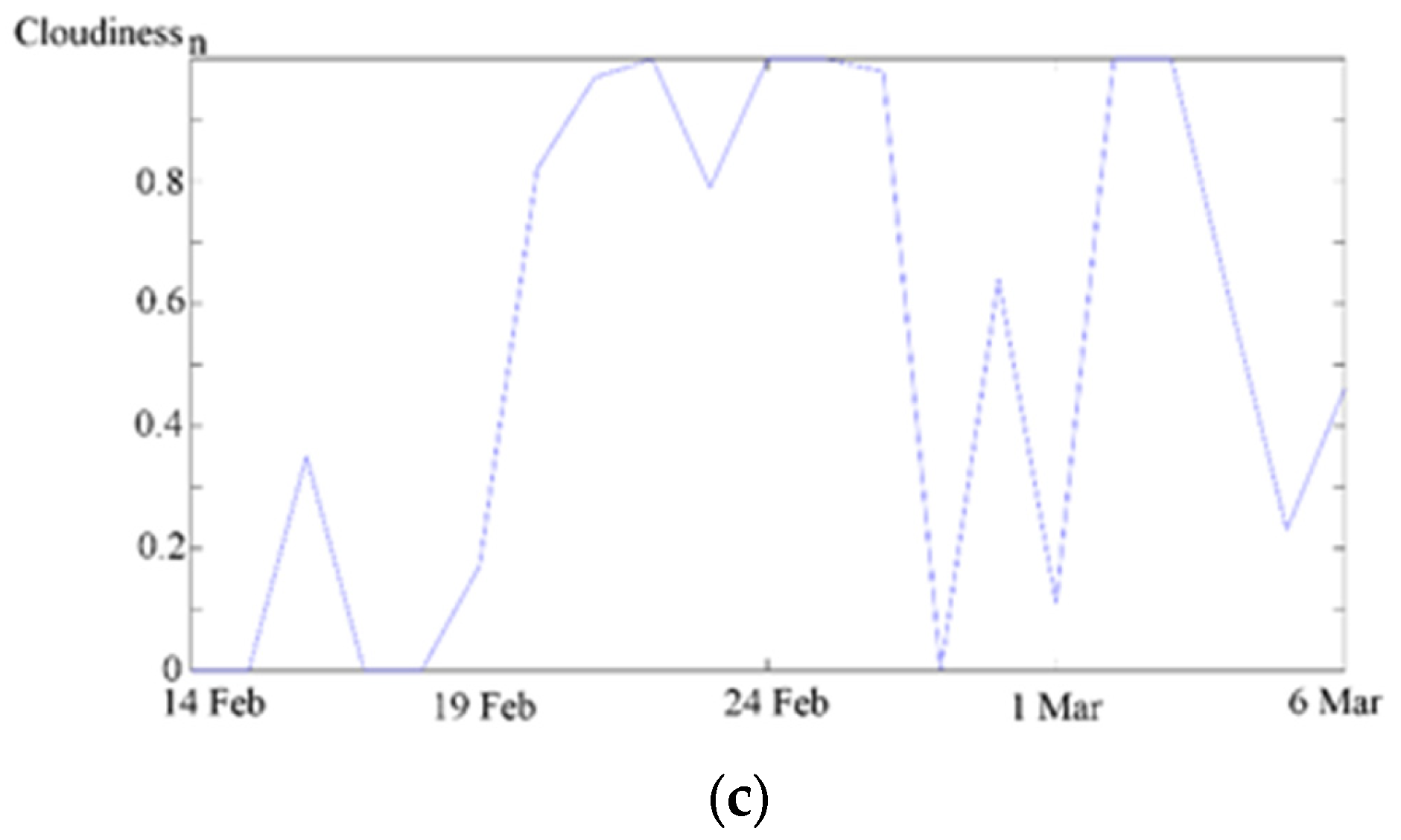


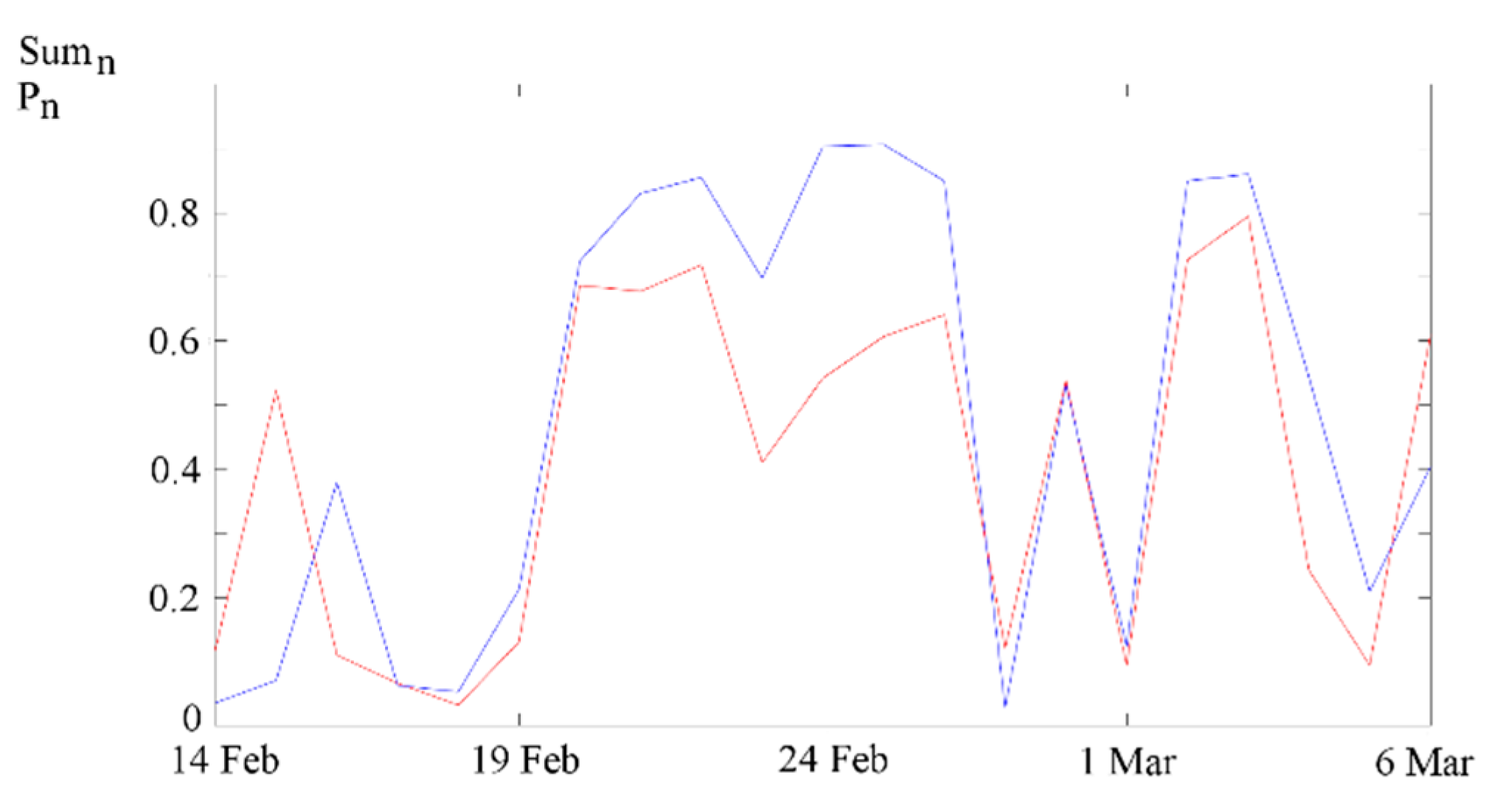
| No. | w11 | w12 | w13 | w%,1 | w%,2 | w%,3 | F |
|---|---|---|---|---|---|---|---|
| 1 | 0.1449 | 0.0053 | 0.7796 | 15.58% | 0.57% | 83.84% | 87.68 |
| 2 | 0.1426 | 0.0081 | 0.7798 | 15.32% | 0.86% | 83.81% | 87.69 |
| 3 | 0.1366 | 0.0134 | 0.7795 | 14.69% | 1.44% | 83.86% | 87.72 |
| 4 | 0.0954 | 0.0609 | 0.7724 | 10.27% | 6.55% | 83.17% | 87.94 |
| 5 | 0.1019 | 0.0336 | 0.7756 | 11.18% | 3.68% | 85.12% | 87.82 |
| 6 | 0.1221 | 0.0213 | 0.7768 | 13.26% | 2.31% | 84.42% | 87.76 |
| 7 | 0.1253 | 0.0152 | 0.7782 | 13.64% | 1.65% | 84.70% | 87.73 |
| 8 | 0.1366 | 0.0085 | 0.7832 | 14.71% | 0.91% | 84.37% | 87.70 |
| 9 | 0.0971 | 0.0335 | 0.7847 | 10.60% | 3.65% | 85.73% | 87.81 |
| 10 | 0.1348 | 0.0137 | 0.7778 | 14.55% | 1.47% | 83.96% | 87.72 |
| Mean value | 13.38% | 2.31% | 84.30% | ||||
| w%,1 + w%,2 | 15.70% | ||||||
Publisher’s Note: MDPI stays neutral with regard to jurisdictional claims in published maps and institutional affiliations. |
© 2022 by the authors. Licensee MDPI, Basel, Switzerland. This article is an open access article distributed under the terms and conditions of the Creative Commons Attribution (CC BY) license (https://creativecommons.org/licenses/by/4.0/).
Share and Cite
Pytel, K.; Hudy, W. Use of Evolutionary Algorithm for Identifying Quantitative Impact of PM2.5 and PM10 on PV Power Generation. Energies 2022, 15, 8192. https://doi.org/10.3390/en15218192
Pytel K, Hudy W. Use of Evolutionary Algorithm for Identifying Quantitative Impact of PM2.5 and PM10 on PV Power Generation. Energies. 2022; 15(21):8192. https://doi.org/10.3390/en15218192
Chicago/Turabian StylePytel, Krzysztof, and Wiktor Hudy. 2022. "Use of Evolutionary Algorithm for Identifying Quantitative Impact of PM2.5 and PM10 on PV Power Generation" Energies 15, no. 21: 8192. https://doi.org/10.3390/en15218192
APA StylePytel, K., & Hudy, W. (2022). Use of Evolutionary Algorithm for Identifying Quantitative Impact of PM2.5 and PM10 on PV Power Generation. Energies, 15(21), 8192. https://doi.org/10.3390/en15218192






